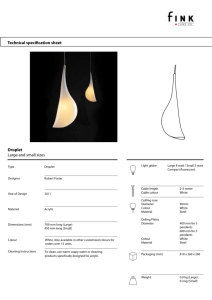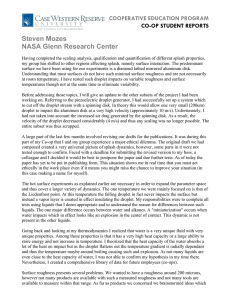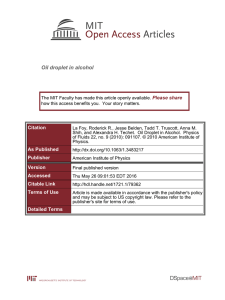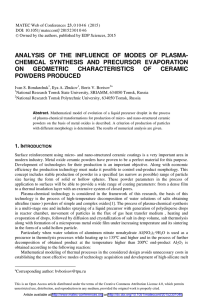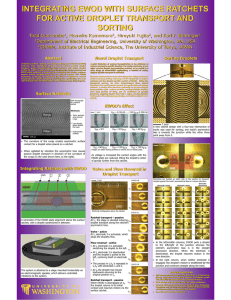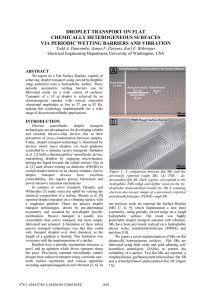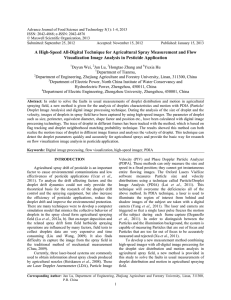Engineering / Physics Seminar Loren Sumner Joshua Gibson
advertisement
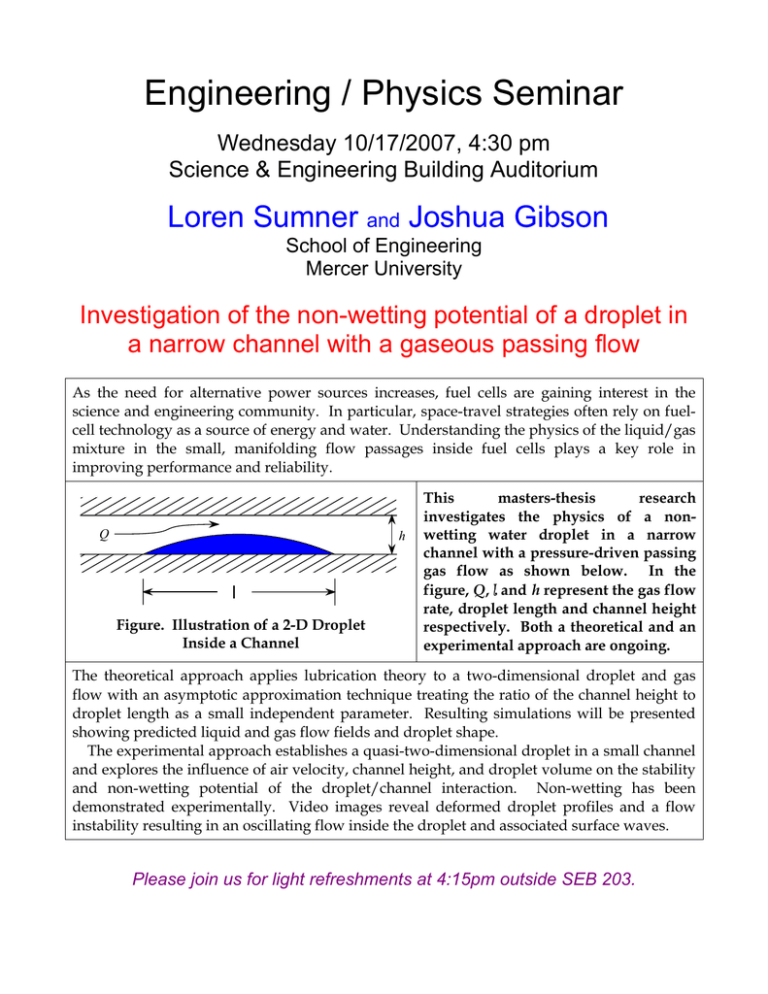
Engineering / Physics Seminar Wednesday 10/17/2007, 4:30 pm Science & Engineering Building Auditorium Loren Sumner and Joshua Gibson School of Engineering Mercer University Investigation of the non-wetting potential of a droplet in a narrow channel with a gaseous passing flow As the need for alternative power sources increases, fuel cells are gaining interest in the science and engineering community. In particular, space-travel strategies often rely on fuelcell technology as a source of energy and water. Understanding the physics of the liquid/gas mixture in the small, manifolding flow passages inside fuel cells plays a key role in improving performance and reliability. Q h l Figure. Illustration of a 2-D Droplet Inside a Channel This masters-thesis research investigates the physics of a nonwetting water droplet in a narrow channel with a pressure-driven passing gas flow as shown below. In the figure, Q, l and h represent the gas flow rate, droplet length and channel height respectively. Both a theoretical and an experimental approach are ongoing. The theoretical approach applies lubrication theory to a two-dimensional droplet and gas flow with an asymptotic approximation technique treating the ratio of the channel height to droplet length as a small independent parameter. Resulting simulations will be presented showing predicted liquid and gas flow fields and droplet shape. The experimental approach establishes a quasi-two-dimensional droplet in a small channel and explores the influence of air velocity, channel height, and droplet volume on the stability and non-wetting potential of the droplet/channel interaction. Non-wetting has been demonstrated experimentally. Video images reveal deformed droplet profiles and a flow instability resulting in an oscillating flow inside the droplet and associated surface waves. Please join us for light refreshments at 4:15pm outside SEB 203.



